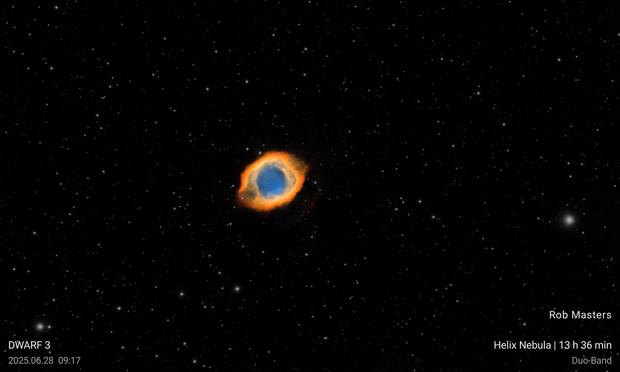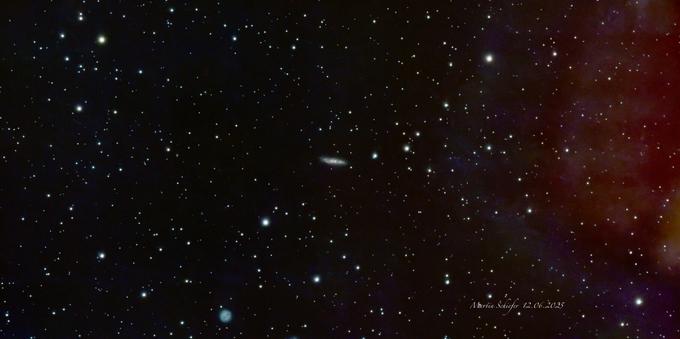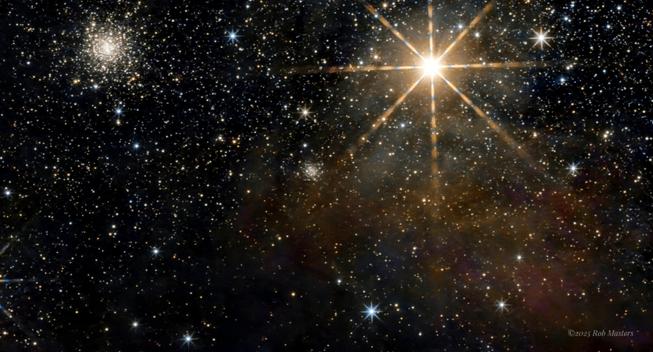Over the last three nights - a break in the weather for us here in #Boorloo ( #PerthWA ) - I've been targeting the same target after midnight and through to astronomical twilight. It is another target that is familiar to me - #C63 or #HelixNebula sometimes known as the Eye of Sauron Nebula or the Eye of God Nebula.
This is the largest planetary nebula visible to us, only about 200 parsecs away, and is about 2.8 light years across, making it about 22 arcminutes across for the main body, and is about 6500 years old.
So back to the making of this image. Each night I got about five hours of shooting in with my #Dwarf3 , for about fifteen hours total. I had to ditch a bunch of frames as they had dodgy data (atmospheric distortions, musktrails, and, in one case, a passing jet), which brought me down to thirteen hours and thirty-six minutes (816x60s@80). These I restacked using the "Megastack" function of the #DwarfLab app (about 3 hours - executed entirely within the telescope), and then passed the result to the #StellarStudio part of the app (running in the cloud) to optimize the FITS file and run a star removal.
I then exported a PNG of each version, and started post-processing. This consisted of passing the starless image into #Snapseed and boosting the saturation, darkening shadows and so on. Then I took the optimized version and took the shadows to maximum darkness, and reduced the overall brightness somewhat, leaving me with a reduced star version, with almost no nebula visible. Lastly, in Snapseed again, I used the double exposure tool to stack the two parts together.
And here is the result.


